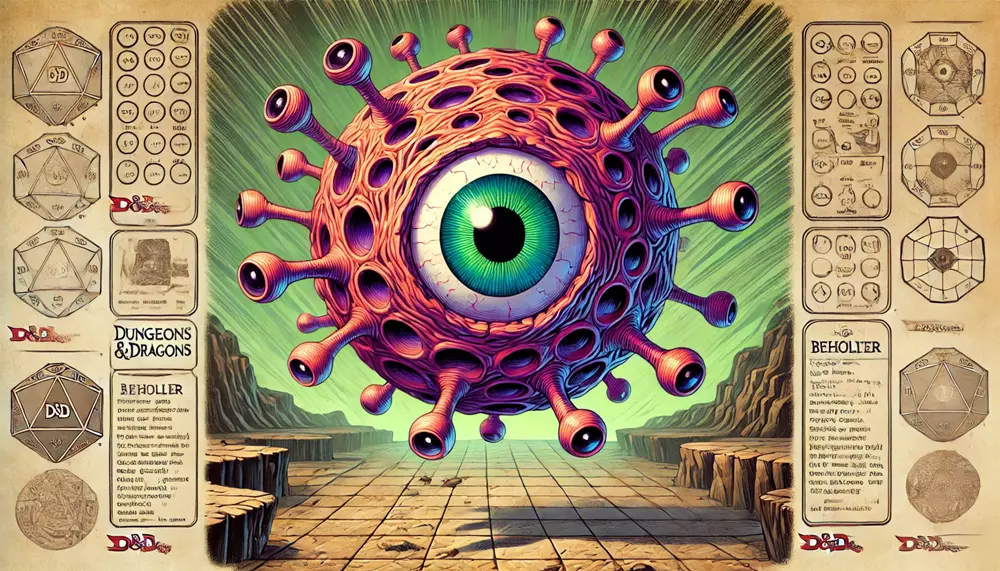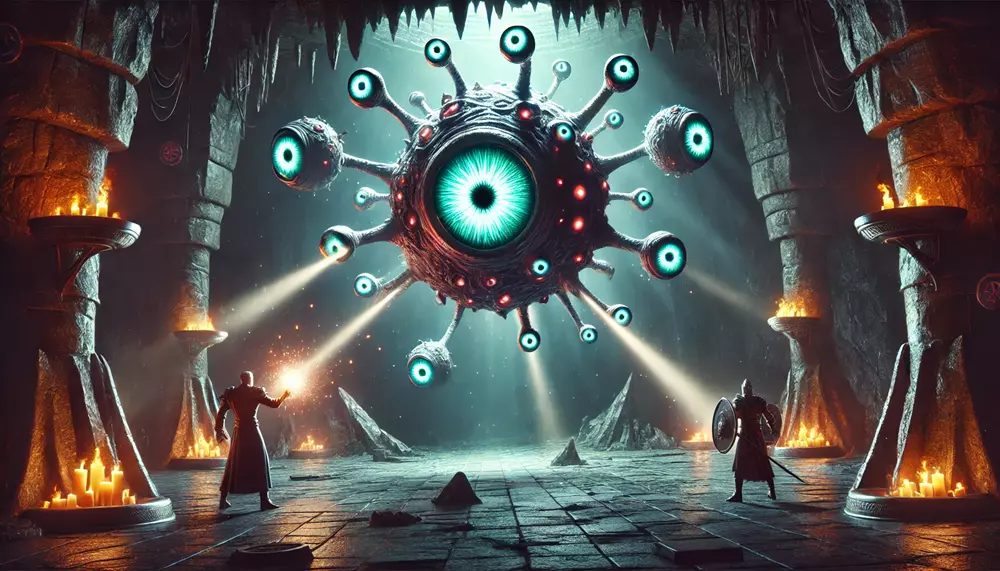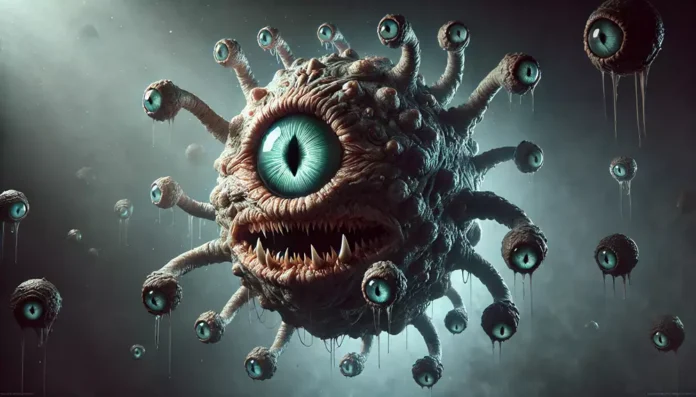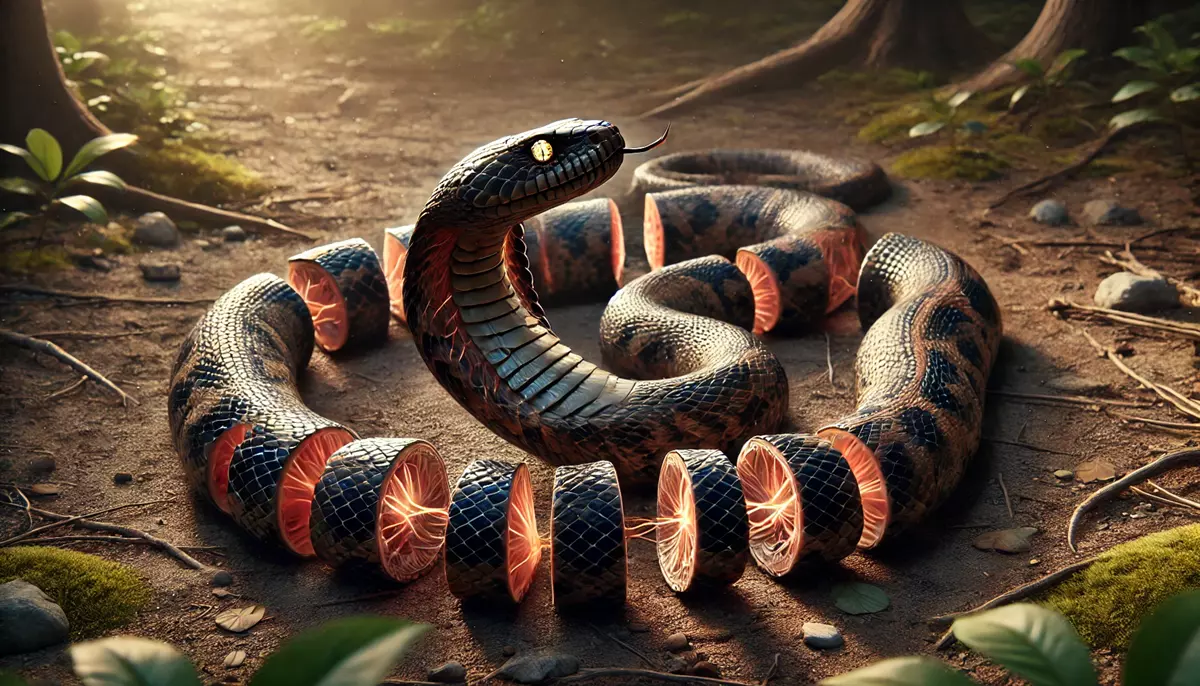Introduction
The Beholder, a creature that defies common fantasy tropes, is an iconic monster in Dungeons & Dragons. With a massive, central eye and multiple eye stalks, each capable of emitting destructive magical rays, the Beholder is a symbol of paranoia, power, and fear. Unlike other fantasy creatures, Beholders are distinct in their ability to wield magic through sheer sight, and they have long been feared as tyrants in their domain.
History/Origin
The Beholder first appeared in 1975, in the earliest editions of Dungeons & Dragons. Its creator, Gary Gygax, introduced it as an original creature, diverging from classic folklore or mythology. The Beholder’s design was revolutionary for the role-playing game genre, presenting players with a foe that tested not just physical strength but also strategic thinking due to its unique abilities. Since its inception, the Beholder has remained one of the most formidable and popular creatures in the D&D universe.
“The Beholder was like no other monster before it—a true invention that brought a new layer of dread to D&D players.” – Gary Gygax, co-creator of Dungeons & Dragons
Name Meaning
The name “Beholder” evokes the idea of constant surveillance, an unblinking gaze that sees all. This title reflects the Beholder’s intense vigilance and its obsession with control. In D&D lore, Beholders often use their many eyes to impose their will and manipulate those around them. The name implies a creature that doesn’t just look at the world but possesses an all-seeing vision, a tyrant with an ever-watchful gaze.
Background Story
In D&D lore, Beholders are highly intelligent, fiercely territorial, and extremely xenophobic. Each Beholder believes it is the pinnacle of its kind and despises all others, often to the point of violent rivalry. This personality trait is intensified by their magical abilities: each eye stalk can cast a different spell or effect, making Beholders deadly adversaries. Many tales describe Beholders as malevolent creatures that hoard knowledge, magic, and treasure, ruling over their lairs with an iron grip. Their existence as singular, self-sufficient monsters adds to their mystery and terror.

“One does not simply encounter a Beholder. One is judged by it, dissected with each glance of its eyes.” – D&D Monster Manual
Cultural Impact
The Beholder’s influence stretches beyond D&D, appearing in a variety of other fantasy games, novels, and adaptations. Its design has influenced other fantasy monsters, serving as inspiration for multi-eyed or fearsome creatures in popular media. Its concept—combining paranoia, authoritarian control, and mystic power—resonates in storytelling, symbolizing the ultimate predator. The Beholder’s place in fantasy culture is secured by its unique abilities and the existential dread it inspires, both on the tabletop and beyond.

Similar Beasts
In many ways, the Beholder has inspired or draws from similar creatures in fantasy. Its characteristics echo some elements of Medusa from Greek mythology, whose gaze also brings destruction. Another comparison is the Basilisk, a mythological serpent whose deadly gaze could turn victims to stone. The Beholder also finds kinship in Lovecraftian horrors, like the many-eyed cosmic entities that represent fear of the unknown.
“Just as the Medusa’s gaze could petrify, the Beholder’s stare paralyzes with fear.” – Adapted from Greek Mythology
Religion/Ritual
Though Beholders themselves are not tied to any real-world religions, in D&D lore, they often have cult-like followings. These cults see Beholders as divine entities, worshiping their power and intellect. Some adventurers or dark sorcerers seek out Beholders to gain their favor, hoping to harness a fraction of their terrifying strength. This worship is often fatal, as Beholders are ruthless and see other beings as mere tools. This twisted reverence only adds to the Beholder’s aura of absolute authority and fear.

Scientific or Rational Explanations
As a product of fantasy, the Beholder’s design defies natural explanation. However, if one were to imagine a rational basis, it might be akin to an evolved predator that developed multiple eyes to monitor all angles in a hostile environment. The creature’s centralized intelligence and keen perception could be seen as traits developed through millennia of survival. This hypothetical evolutionary trait would make sense in a world where magical beasts are as common as natural predators.
Modern Cultural References (5-19 examples/references)
Dungeons & Dragons – The Beholder remains a staple monster in all D&D editions, a classic foe for adventurers.
“Baldur’s Gate” Series – Beholders appear as formidable enemies that challenge players’ strategies.
“The Adventure Zone” Podcast – Features a Beholder encounter in its campaign, adding humor and terror.
“Stranger Things” – The D&D-loving kids reference Beholders in their own adventure scenes.
Magic: The Gathering – Inspired a card depicting a creature with multiple eyes and gaze abilities.
“Ready Player One” – The novel includes a Beholder as part of a video game world reference.
“Neverwinter Nights” – Beholders appear as formidable bosses in the video game adaptation of D&D.
Pathfinder – The Beholder inspires similar multi-eyed creatures known as “Gazers” in this RPG.
“Critical Role” – Beholders have appeared in campaigns, showcasing their strategic threat to players.
“World of Warcraft” – While not called Beholders, creatures with multiple eyes resemble their structure and danger level.
Conclusion
The Beholder represents fear, power, and paranoia in the world of fantasy. Its unblinking, all-seeing eyes serve as symbols of absolute control, often inspiring dread and curiosity in those who encounter it. With its unmatched position in fantasy lore, particularly within D&D, the Beholder’s legend endures, both as an adversary and a symbol. It remains a creature of supreme vigilance and intelligence, reminding adventurers of the dangers lurking in the unknown. The Beholder is a masterpiece of monster design, encapsulating the terror of facing an enemy that sees all yet remains hidden in the shadows, waiting to strike.










